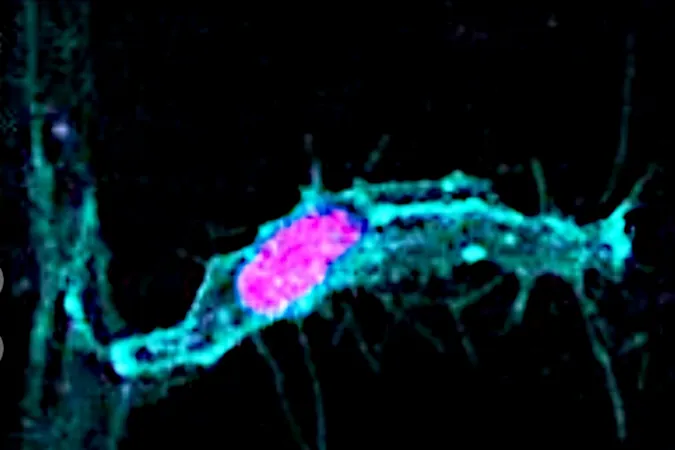
Shocking New Findings Challenge Everything You Knew About Cell Division!
2025-05-04
Author: Nur
Rethinking Cell Division: What You Learned May Be Wrong!
If you aced high school biology, you likely remember the basic lesson on mitosis: the method by which cells divide. For over a century, we've been taught that during this process, parent cells morph into a spherical shape before splitting into two identical daughter cells. But hold onto your textbooks—new research is poised to change this long-held belief.
A groundbreaking study published in the journal Science reveals that mitosis is far from a straightforward round-up. Researchers discovered that not all cells become spherical during division, leading to daughter cells that can be asymmetrical and functionally distinct. This insight could have transformative implications for our understanding of diseases like cancer.
Lead researcher Shane Herbert from the University of Manchester explained, 'Students are taught that cell division results in uniform spherical shapes. Our research shows that in actual living organisms, it’s much more nuanced.'
Unlocking Mysteries via Zebrafish Embryos!
The team focused on blood vessel formation in zebrafish embryos, where they observed a remarkable process. The formation is driven by a single speedy cell leading a group of slower cells. When this lead cell underwent mitosis, it didn’t round up; instead, it divided asymmetrically. This produced one fast-moving leader cell and a slower one—an observation that was previously linked mainly to stem cells.
'Using one-day-old transparent zebrafish embryos allows us to witness this dynamic process of cell division inside a living organism,' said Holly Lovegrove, co-lead author and cardiovascular sciences lecturer at the University of Manchester. 'It enables us to capture footage of fundamental cellular behaviors and reveals exciting new dimensions of tissue growth.'
Shape Matters: A Game-Changer in Cell Division!
The researchers also found that the initial shape of the parent cell plays a crucial role in determining the symmetry of the division. Short, wide cells tended to round out, resulting in two identical daughter cells, while longer, thinner cells maintained their shape, leading to asymmetrical division.
To explore this further, the team employed a technique called micropatterning to manipulate the size and shape of human parent cells. 'Micropatterning creates specially shaped protein patches that cells adhere to, influencing their shape and, consequently, their division behavior,' explained Georgia Hulmes, a postdoctoral research associate at the University of Manchester.
Implications for Science and Medicine!
The research suggests we could eventually control cell functions by altering parent cell shapes. This could provide revolutionary insights into tissue and organ development, as well as potential therapies for diseases like cancer—where asymmetric divisions may lead to behaviors linked to progression.
Meanwhile, educators everywhere might want to brace themselves for a textbook overhaul! With these revelations, the road ahead for biology education just got a lot more intriguing.


 Brasil (PT)
Brasil (PT)
 Canada (EN)
Canada (EN)
 Chile (ES)
Chile (ES)
 Česko (CS)
Česko (CS)
 대한민국 (KO)
대한민국 (KO)
 España (ES)
España (ES)
 France (FR)
France (FR)
 Hong Kong (EN)
Hong Kong (EN)
 Italia (IT)
Italia (IT)
 日本 (JA)
日本 (JA)
 Magyarország (HU)
Magyarország (HU)
 Norge (NO)
Norge (NO)
 Polska (PL)
Polska (PL)
 Schweiz (DE)
Schweiz (DE)
 Singapore (EN)
Singapore (EN)
 Sverige (SV)
Sverige (SV)
 Suomi (FI)
Suomi (FI)
 Türkiye (TR)
Türkiye (TR)
 الإمارات العربية المتحدة (AR)
الإمارات العربية المتحدة (AR)